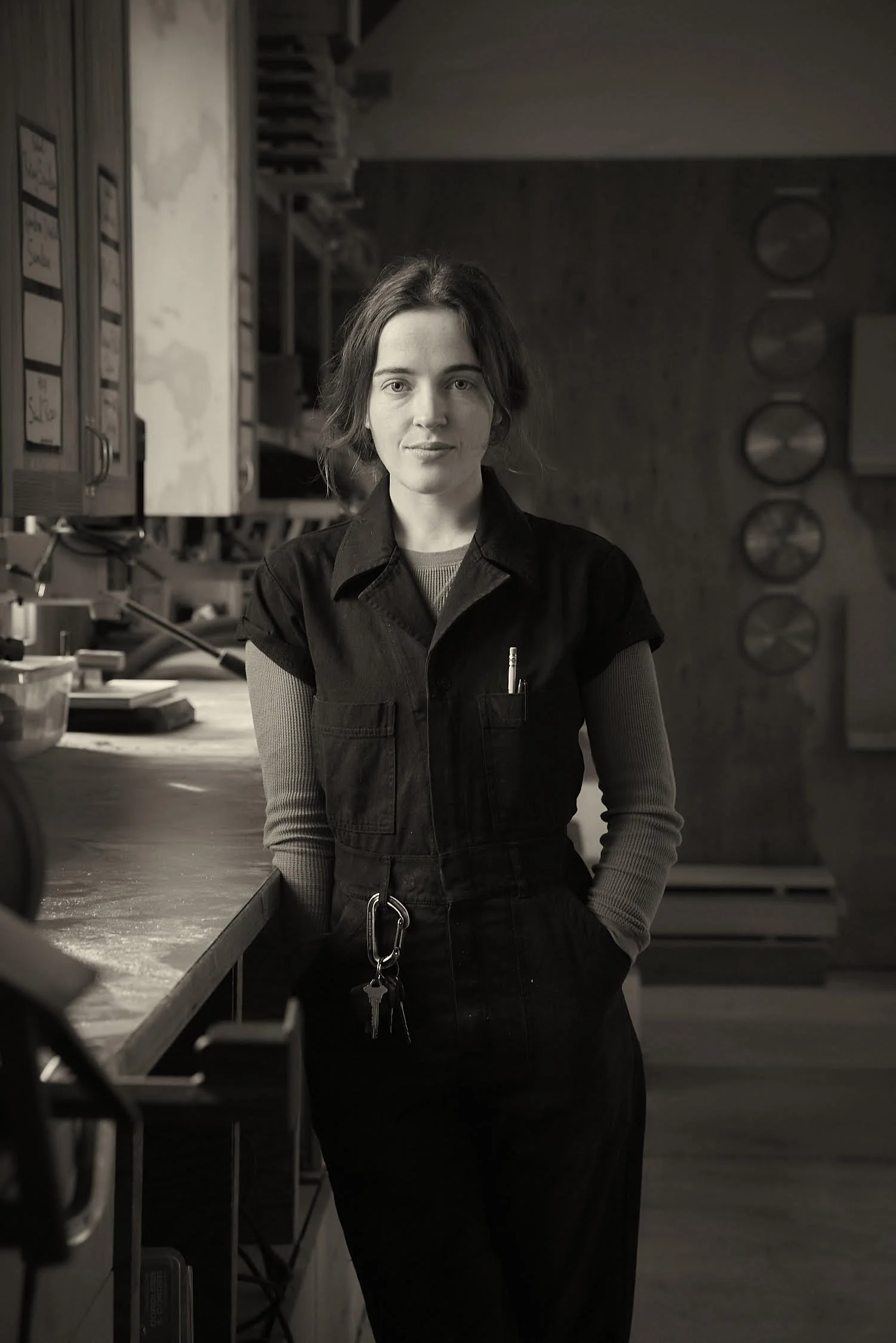Chairmaking: Building a Windsor
6 Days, Open to All
Spring 2024
April 22-27
Summer 2024
August 26-31
In this six-day course, instructors Steve Habersetzer and Annalise Rubida will guide you through building a serviceable, classic, West Coast take on the traditional Windsor chair. From steam-bending to seat carving, the goal of this course is to leave with a solid understanding of Windsor joinery and the qualities that make a good chair.
Steve is an artisan woodworker with over 40 years of experience. His body of work is diverse: from the elegant simplicity of a handmade cedar bucket to the complexity of a vardo wagon. He has been designing and building West Coast Windsor chairs for more than 10 years.
Annalise started woodworking in the PTSW Foundations of Woodworking program where she became fascinated with green woodworking and chair making. Since then she has focused her own work on Windsor chair design and construction in both traditional and contemporary styles.
Students will be guided through the design and steps in making a Windsor chair using traditional hand woodworking methods. All aspects of making a Windsor chair will be covered. After completion of the course, students will be able to:
Steam-bend wood
Shave and shape parts
Drill stretchers and legs
Carve seats
Cut chair joinery
Lay out sight lines
Use templates and jigs
In addition, we’ll also cover these topics in discussions and demonstrations:
Tools and sharpening
Chair design
Assembly
Finish
Tools:
We provide all the tools you will need to successfully complete this course, but recommend you bring these if you have them and would like to grow comfortable with your own tools:
Spokeshave
Drawknife
Dividers
Awl
18” rule/straightedge (can be wooden/shop made)
Bevel gauge
4'“/6”/12” combination square (just one)
Tape measure
Sketchbook, pencil, and eraser
Suggested tools:
Scorp* (used for aggressive wood removal. Some use an adze instead)
Inshave* (middle step between scorp and travisher. With a good one, and some skill, you can get along without the travisher)
Travishers* (used for final seat shaping before scraping. Several profiles for different parts of the seat)
Reamer* (6 degree taper)
Scrapers: curved and straight
Rasp (#49 or #50 or hand stitched preferred)
Bench chisels
Large in-cannel gouge (1” to 2”)
Veiner (9/10 or 11/7 work well)
Block plane
Brace and auger bits - 5/8”, 1/2”, 7/16” and 3/8”
Brad point bits with stop collars - 5/8”, 7/16” and 3/8”
Straight tenon cutters - 5/8”, 7/16” and 3/8”
Cordless drill
Japanese handsaw (180mm dozuki, kataba or royba)
Safety gear that you like - dust mask, goggles and ear defenders
Any other hand tools you enjoy using
* These tools are rare or hard to find. Steve is working with two local smiths to produce his own tools for sale. We will have a few sets available for purchase at the start of class. Please let us know if you are interested as tools will be sold on a first-come basis. Below are some links to other tool resources.
Prerequisites
Open to all.
Class Information and Registration
Class is 9:00 am to 5:00 pm Monday through Saturday in Building 315 at Fort Worden. Map
Please read our What to Expect page for general information about the School.
Please also read our Registration Policy.
Please sign up for the waitlist if the course is full.
Class size: 12
Cost: $1,075
Materials Charge: $200





Coopering, Green Woodworking,
Gypsy Wagons, Tiny Homes
Port Townsend, WA